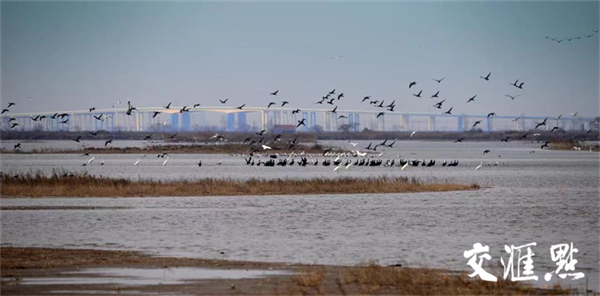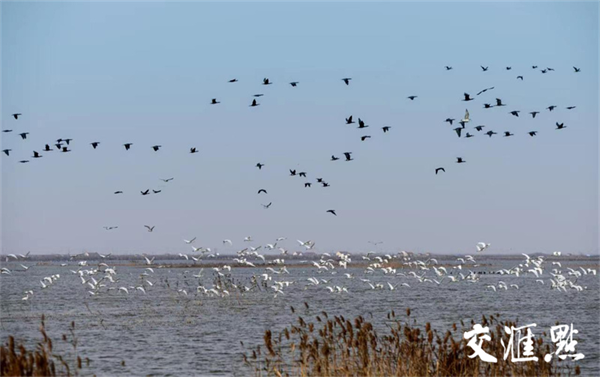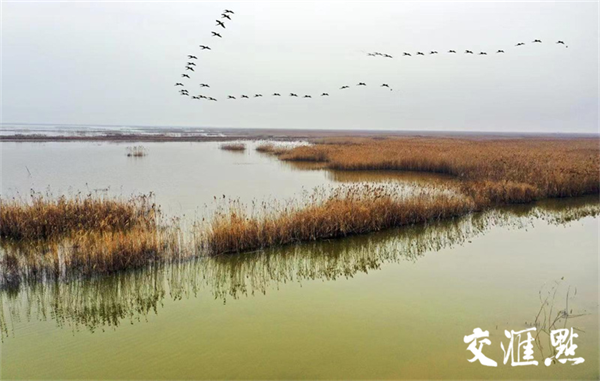
The nature-based solutions for ecological conservation and restoration have made the No.1 Reservoir at Sheyang Salt Farm a vibrant sanctuary for dozens of bird species, such as red-crowned crane, egret and cormorant.
The reservoir at the salt flat gradually dried up and began the process of desertification around 2010 when water flow stopped and siltation worsened in the reservoir. Meanwhile, the site of 8,700 mu (580 hectares) is located in the buffer zone of the Yancheng National Rare Birds Nature Reserve and was once an important habitat for rare and endangered birds.
As China moves toward the sustainable development, local authorities and Nanjing University Ecological Research Institute of Changshu cooperated for NBS ecological conservation and restoration at the site.

Gao Jun, deputy Party chief and general manager of Sheyang Salt Farm, said the project involved an investment of 11.5 million yuan and included efforts of water diversion, terrain modification, vegetation and bringing back the species of benthic animals and fish. This project helped restore a natural environment and created an artificial wetland, and won the acceptance in May 2018.
To improve the land degradation and soil salinity control, Sheyang Salt Farm invested 780,000 yuan to build an integrated diversion, drainage and water control system, which can adjust the water level in accordance to the seasonal rainfalls, water needs and the need to control the invasive common cordgrass.
Sheyang has been committed to wetland protection and development, with plans mapped out in the near, medium and long term. The county has carried out a series of ecological restoration and improvement programs and made progress on a coastline of 39.37 kilometers long, the 2,306-hectare Xialaohu reclamation area, and the closure of 51,400 mu of marine farm.

Contact us at english@jschina.com.cn




















